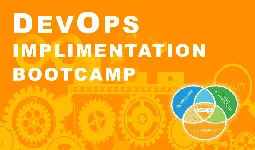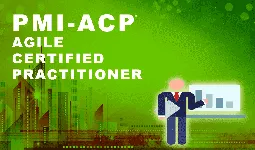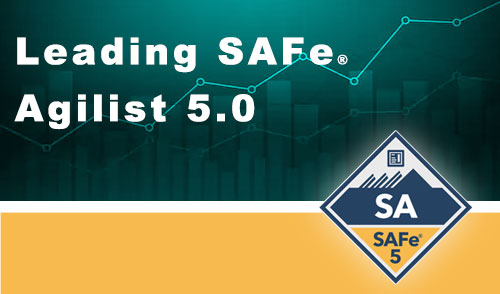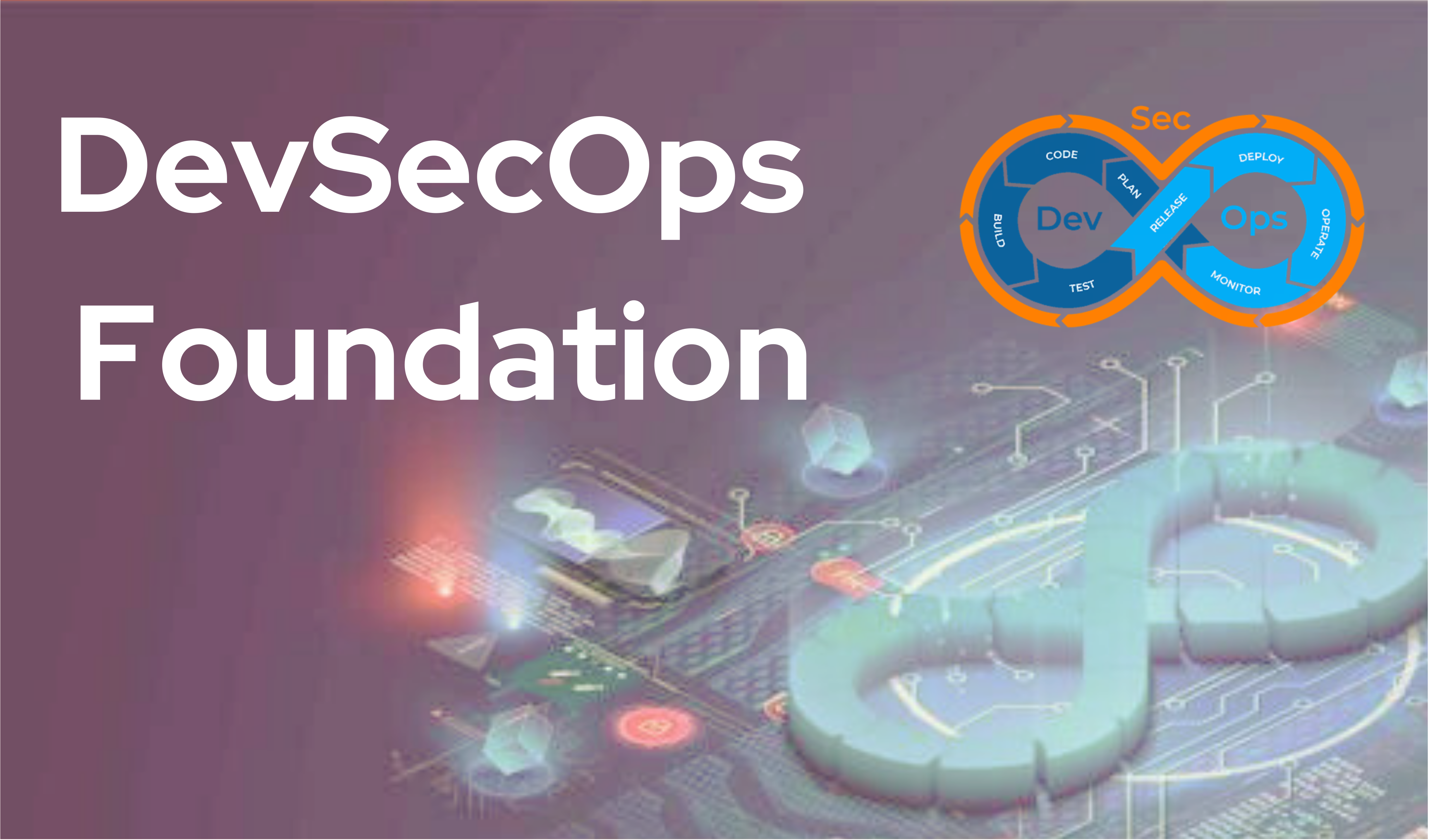Agile Environment Guide
-
 By Sushmith
By Sushmith - Published on Dec 28 2023

Table of Contents
- What is an Agile Environment and how does it work?
- Characteristics of Agile Environment
- Benefits of Creating an Agile Environment
- How to Create an Agile Environment?
- What is scrum and how is it used in agile methodology?
- Four Important Core Values of Agile
- Key components of Agile project management
- The Agile Development Life Cycle:
- Best Practices for Agile Implementation
- FAQs
- Conclusion
What is an Agile Environment and how does it work?
Agile principles are associated with software development of a company or organization that provides complete support to agile project management. The basic work of agile is to increase and improve an environment continuously via users.
To help the performance of the team: lead time, cycle time, and throughput metrics are used in an agile environment. It contains three levels of estimation, which are project or proposal level, release level, and sprint level. These are the main topics to define what an agile environment is all about. The Agile software development environment is based on iterative development.
Applications of Agile Environment
From 1999-2000 Agile helped with IT development for project management and software development. Not only in these two fields, but an agile work environment is also popular in the knowledge and service industries. Hence, according to customer demands, agile should be able to respond quickly. And wherever the workflow occurs, Agile is applicable in all those places. The agile environment is broken from the long delivery to the short delivery and sprints to work better for the user.
Characteristics of Agile Environment

1) Focus on customer
Agile focuses on the customer at all times. Customers need to identify themselves on the basis of priority. The value gets incremented if the customer receives the product earlier. Answering the customer's feedback makes them clear and satisfied.
2) Embracing change
Embracing change is an opportunity to improve and try to do new innovations to develop an environment. Embracing change works as a team development cycle. The team should be able to move quickly and lightly to make customers embrace.
3) Leaving room for Innovation
Agile does not use any cookie methods in project management. And it allows room for flexibility and innovation. Brainstorming helps the team come up with new ideas and solutions, and it also helps identify the competitor.
4) Focus on process improvement
The agile method is a natural choice for projects, and high quality is a key focus. Agile techniques help the team with a process called a continual cycle. In each ending process, the continual cycle process is used to adapt and reflect it. In the continual process, reviews and retrospectives help to improve the process and build each cycle.
5) Working in iteration
The project team goes through the entire process cycle and evaluates each iteration or work. It evaluates the process in a traditional way for two weeks of the cycle and releases the value of each ending cycle.
6) Collaboration
Teamwork is important to reach the goal. And the team shares the responsibility and accountability for delivering the product with value and high quality.
Agile Workspace Types
The main concept of agile is to maintain workspace flexibility. The Agile environment contains many smaller working places. The workspace size is not the same or similar; it is arranged according to the workspace.
Here are some examples included:
- Breakout meeting spaces
- Experiential spaces
- Open plan spaces
- Quiet work zones
- Resource spaces
- Touchdown and overflow areas
They may look different but work the same. The function of the task differs from space to space. Agile measures the speed and processes the work.
Benefits of Creating an Agile Environment
An agile environment gives constant feedback, learning, flexibility, collaboration, creativity, and innovation. And it uses the same attributes to IT and organization.
1) Attract top talent and increase retention
To attract top-talented experts, the organization is a place where they can get an opportunity to learn more and build a career. And they may be willing to stay longer in the company if they are able to learn more and develop skills. It is necessary to build an employee culture in an organization to get closer to them. According to a report on future workspaces for 2020, 64% of employees require the ability to work from home.
2) Increase overall productivity
There are three important ways to increase productivity: technology, division of labor, and motivating the employees. Technology helps us learn and develop new skills. Division of labor helps make them comfortable and motivation helps them work better.
3) Develop a competitive edge
Developing a competitive edge works when two products cost the same or similar. By giving an advantage to one product with a unique feature, the buyer may be willing to take it. On this basis, developing a competitive edge works.
How to Create an Agile Environment?
Creating an organization at a better level to develop employees’ skills is important by offering a good environment.
a)Get everyone on board
Leadership is the most important skill to make decisions in an agile workspace environment. It gathers everyone on board from the CEO of an organization to a new entry-level employee.
b)Empower people
In an agile environment, empowering people does not work for a single employee; it works for the entire company. It helps employees become stronger and more confident.
- Make them clear
- Remove distractions
- Allow employees to work better
- Give the individual opportunity to respond back
- Accept the various idea and input
- Be genuine and sincere
- Map out the path of the vision
c)Encourage learning
It is necessary to encourage the employee to learn better. It works better to create and give the learning platform for an employee to receive the best output from them. Achievement does not happen overnight; it takes time to utilize and yield results. Encouraging the employees would help them learn from their past mistakes and avoid them in the future.
d)Promote transparency
Being honest and straightforward is one of the best skills. The mistakes need to be figured out and addressed to avoid them next time. Conducting weekly meetings helps keep employees engaged. It helps create new growth opportunities and bring out more ideas.
e)Minimize bureaucracy
6 basic steps to minimize bureaucracy in agile workspace environment:
I)Know what do want to get done
It is possible for an employee to forget the end process. To make the work easier, use the best process needed to complete the work rather than making things complicated.
II)Know your priorities
It is very important for the employee to know what the company or organization does. It helps them work better. Based on company requirements, the employee can identify their commitments to work better.
III) Eliminate paperwork whenever possible
It is always better to avoid paperwork whenever possible. A computer or online form works better for rewriting, which is not feasible with paper.
IV)Don’t put off decisions
If the decision is necessary, make it quickly without any delay. Make sure all the information is correct. The longer the decision is delayed, the worse the problem becomes.
V)Keep the information ready
If the information is proper, it is easy for an employee to make decisions. If the proper information is not present, the employee puts the decision off. Figure out what decision is needed and make it quickly.
VI)Reward action
Rewarding employees makes them more confident and encouraged. It works in the form of actions like bonuses, promotions, or praise.
What is scrum and how is it used in agile methodology?
Scrum is the framework that is used for an employee or team to give solutions when they find complex problems. It replaces the algorithm, which is already programmed, and solves the complex program. On this basis, an Agile Scrum Methodology is used by the product owner, scrum master, and members of the development team. Scrum changes the title while adopting to avoid confusing the job title when exiting.
There are some methods used in the scrum.
- Sprint planning
Sprint planning evolves to finish each component of the project. The goal of sprint planning is to make sure that everyone is motivated and understands what the next sprint requires.
- Daily scrum
Daily scrum meetings check the temperature in the sprint. The scrum master oversees the daily scrum. It takes 15 minutes to work in the daily scrum without any distraction.
- Sprint review
The sprint review works as an autopsy before moving on to the next sprint. It gives a chance to each person to learn during the sprint and helps find each person's contribution.
- Sprint retrospective
It is important to discuss with the team whether the recent sprint was successful or unsuccessful. It helps to improve and avoid mistakes in future sprints. To prepare for the next sprint, it is always better to review previous sprints. All the processes of the scrum methodology used are designed to receive incremental feedback.
Four Important Core Values of Agile
- Individuals and interactions over processes and tool
- Working software over comprehensive documentation
- Customer collaboration over contract negotiation
- Responding to change to following a plan
These are the four main core values that work under an agile development environment.
a)Individuals and interactions over process and tool
In any kind of project management, whatever the technology is or involves, it cannot equal human work.
b)Working software over comprehensive documentation
Documentation is very important in software working. Instead of stuffing or overloading the developer to get the job done, it is better to give the exact values.
c) Customer collaboration over contract negotiation
Customers are the asset of the work or business; whether internal or external, just involve them in the process to make them more satisfied. This is crucial for an agile business environment.
d)Responding to change to following a plan
This is one of the biggest values in traditional project management. It is very expensive and better to avoid. Agile allows any changes that are mandatory in order to respond to the plan.
What are agile project management and its uses?
For planning and guiding, the project process is the first step in approaching agile project management. It takes a few steps to complete the complex problem by increasing and improving values continuously. The agile environment gets release benefits for the process by using an iterative approach. Its projects use more popular software, and agile follows traditional project management’s non-linear processes.
Key components of Agile project management

- User stories
- Sprints
- Stand-up meeting
- Agile board
- Backlog
These are the main components that work in project management in an agile environment.
User stories
It is used to describe software features of the work. User stories contain all the information about the customer as per the request. It helps the team solve all requests from the customer. It is simple to focus on a client's needs.
Sprints
Sprints are called constants. Sprint planning meetings are used to complete the work. The task is completed in three to four weeks, and it offers a flow to work continuously.
Stand–up meeting
When a project reaches a high level, the team receives an opportunity to discuss the process. It stands up and remains standing to keep the meeting on task about the topic.
Agile board
The main purpose of an agile board is to track the progress of the entire project. The track works on the whiteboard or in project management software.
Backlog
As project requests are taken by the system and become outstanding stories in the backlog, those stories are moved to sprints to complete the iteration. It plays an important role when it comes to backlog maintenance for project managers in an agile environment.
Agile Development Life Cycle
The Agile Development Life Cycle is a dynamic flow between iterative cycles, called sprints, where flexibility and collaboration reign supreme. Imagine a software development journey not as a rigid roadmap, but as a winding river. Agile development life cycle (SDLC) embraces this fluidity.
The Agile Development Life Cycle:
Sprint Planning: The adventure begins! We gather as a team, map out the sprint goals, and break down the workload into manageable tasks. Think of it as packing our agile knapsacks with clear objectives.
Development Iterations: Time to roll up our sleeves! Developers tackle the tasks in short bursts, continuously testing and integrating their work. Collaboration thrives, with open communication and code reviews ensuring smooth progress.
Daily Stand-ups: No mountain high enough! Each morning, we gather for a quick huddle, sharing progress, roadblocks, and adjustments needed. Think of it as checking our compass and ensuring everyone's on the same trail.
Sprint Review: Time to celebrate (or learn)! We showcase what we've achieved, gather feedback from stakeholders, and identify areas for improvement. Think of it as reaching a scenic vista and refining our path based on the view.
Sprint Retrospective: Time to introspect! We reflect on the sprint, analyzing what worked well and what could be better next time. Think of it as sharpening our tools and honing our skills before the next leg of the journey.
This iterative cycle is the heart of Agile. It's like building a ship with a flexible hull, navigating the ever-changing seas of project requirements. Each step is a chance to experiment, learn, and deliver value to your customers or clients.
Best Practices for Agile Implementation
Agile isn't just about adopting a fancy framework; it's about embracing a mindset. Here are some best practices to make your Agile journey truly transformative:
Embrace collaboration: Break down silos and foster open communication. Encourage everyone to share ideas, ask questions, and learn from each other. Remember, two minds are better than one (and ten minds are a brainstorming party!).
Focus on value: Prioritize features that deliver the most value to your users. Don't get bogged down in endless features; focus on the ones that make a real difference. Think of it as building a bridge, not just adding bricks.
Welcome feedback: Embrace feedback from stakeholders and users throughout the process. It's not a sign of failure, but an opportunity to refine your approach and deliver something truly exceptional. Think of it as polishing a diamond, not hiding it in the rough.
Be adaptable: Change is inevitable, so be prepared to adjust your plans and priorities as needed. Agile is all about staying flexible and nimble, like a willow bending in the wind.
Celebrate success: Take time to acknowledge and celebrate your achievements, big and small. A pat on the back goes a long way in keeping the team motivated and engaged. Remember, even the smallest steps on a journey are worth celebrating.
By incorporating these best practices, you can unlock the true potential of Agile and navigate the development life cycle with confidence.
FAQs
What are 3 ways to be Agile?
- Embrace Iterations: Break down projects into bite-sized sprints, learn from each iteration, and adapt quickly. Think "mini-victories" instead of long, drawn-out marathons.
- Value Collaboration: Foster open communication, encourage teamwork, and break down silos. Remember, two (or ten!) minds are better than one.
- Welcome Feedback: Embrace user and stakeholder feedback throughout the process. It's not criticism, but a chance to refine your approach and deliver the best possible results.
What is an agile environment?
An agile environment fosters flexibility, collaboration, and continuous improvement. It's a workspace where teams work in sprints, respond quickly to change, and prioritize value delivery over rigid schedules. Think of it as a jungle gym for ideas, not a straightjacket.
What is an agile work environment?
An agile work environment encourages open communication, physical and virtual collaboration spaces, and tools that support transparency and visibility. It's a dynamic space where teams feel empowered to share ideas, learn from each other, and celebrate progress together. Think of it as a vibrant hub for creativity and innovation.
How do you plan an agile environment?
Planning an agile environment involves focusing on:
- Values and principles: Define your team's core values like collaboration, continuous improvement, and adaptability.
- Roles and responsibilities: Clearly define roles within the team and ensure everyone understands their responsibilities.
- Tools and technologies: Choose tools that support transparency, communication, and task management.
- Metrics and feedback: Establish key performance indicators and encourage regular feedback loops to learn and adapt.
What is the difference between Agile and Scrum?
Agile is a broader set of principles and values, while Scrum is a specific framework within the Agile umbrella. Think of Agile as the philosophy and Scrum as a recipe within that philosophy. Scrum provides a structured approach with roles (Scrum Master, Product Owner, Development Team), artifacts (Product Backlog, Sprint Backlog, Increment), and events (Sprint Planning, Daily Scrum, Sprint Review, Retrospective) for implementing Agile principles in practice.
Conclusion
Agile is associated with the software development method. It is defined as an environment to create and support people to encourage them to move forward and achieve a common goal. It gives importance to their interactions.
In this article, we have discussed agile management and agile project management.
Sprintzeal offers agile management program certification courses globally. Use the chat option available on the website to get full details.
Explore these agile management courses –
PRINCE2 Agile Certification Training Course
CSM Certification - Scrum Master Certification Training
Here are some articles that might be useful to you
AGILE METHODOLOGY EXPLAINED IN DETAIL
AGILE PROJECT MANAGEMENT EXPLAINED
BEST AGILE TOOLS FOR PROJECT MANAGERS IN 2024
Subscribe to our Newsletters
Popular Programs
PSM® - Professional Scrum Master Certification
Live Virtual Training
- 4.2 (75 + Ratings)
- 64k + Learners
Trending Posts
Data Processing - A Beginner's Guide
Last updated on Aug 18 2022
List Of Traits An Effective Agile Scrum Master Must Possess
Last updated on Aug 5 2022
Product Roadmap: An Ultimate Guide to Successful Planning and Implementation
Last updated on Sep 27 2023
Importance of Procurement Management Software in Modern Business
Last updated on Feb 28 2025
Latest Agile Interview Questions and Answers To Look For In 2024
Last updated on Jul 21 2023
How to Write an Executive Summary for a Business Plan?
Last updated on Feb 13 2025
Categories
- Agile Management 54
- AI and Machine Learning 42
- Big Data 53
- Business Management 51
- Cloud Computing 44
- Digital Marketing 56
- Information Security 8
- IT Hardware and Networking 17
- IT Security 103
- IT Service Management 29
- Leadership and Management 1
- Microsoft Program 2
- Other 43
- Programming Language 31
- Project Management 162
- Quality Management 75
- Risk Management 8
- Workplace Skill Building 2
Trending Now
List Of Traits An Effective Agile Scrum Master Must Possess
ArticleDevOps Vs Agile Differences Explained
ArticleDevops Tools Usage, and Benefits of Development Operations & VSTS
ArticleAgile Scrum Methodology - Benefits, Framework and Activities Explained
ArticleGuide to Agile Project Management 2024
Article10 best practices for effective DevOps in 2024
ArticleGuide to Becoming a Certified Scrum Master in 2024
ArticleWhy Should You Consider Getting a Scrum Master Certification?
ArticleCSM vs CSPO: Which Certification is Right for You?
ArticleAgile Manifesto - Principles, Values and Benefits
ArticleAgile Methodology Explained in Detail
ArticleAgile Project Management Explained
ArticleEssential Tools for Agile Project Management 2024
ArticleEverything about Scrum Methodology
ArticleScrum Workflow - A Step by Step Guide
ArticleLatest Agile Interview Questions and Answers To Look For In 2024
ArticleScrum Interview Questions and Answers 2024
ArticleTop Scrum Master Responsibilities 2024 (Updated)
ArticleProduct Life Cycle in Marketing: Essential Strategies for Product’s Success
ArticleDevOps Engineer Interview Questions - Best of 2024
ArticleDevOps Engineer - Career path, Job scope, and Certifications
ArticleBusiness Agility Guide - Importance, Benefits and Tips
ArticleScrum vs Safe – Differences Explained
ArticleCSM vs. PSM - Which Scrum Certification is Better?
ArticleSAFe Implementation Roadmap Guide
ArticleAgile Release Plan Guide
ArticleAgile Coaching Guide - Best Skills for Agile Coaches
ArticleAgile Principles Guide
ArticleSAFe Certifications List - Best of 2024
ArticleAgile Prioritization Techniques Explained
ArticleScrum Ceremonies Guide
ArticleProduct Owner Certifications List
ArticleScrum of Scrums Guide
ArticleWhat is DevSecOps and its Importance
ArticleData Processing - A Beginner's Guide
ArticleDevOps Career Guide 2024
ArticleStakeholder Engagement Levels Guide
ArticleScrum Master Career Path Explained
ArticleScrum Career Path Explained
ArticleTop Git Interview Questions and Answers [Updated 2024]
ArticleA guide to Agility in cloud computing
ebookProduct Roadmap: An Ultimate Guide to Successful Planning and Implementation
ArticleDMAIC Methodology - The Ultimate Guide
ArticleProduct Life Cycle Strategies: Key to Maximizing Product Efficiency
ArticleScrum Master Salary Trends in 2024
ArticleProduct Life Cycle Model: A Guide to Understanding Your Product's Success
ArticleWhat is a Product Owner - Role, Objectives and Importance Explained
ArticleSuccessful Product Strategies for Introduction Stage of Product Life Cycle
ArticleUnlocking Career Opportunities in Product Management: Your Roadmap to Success
ArticleSaturation Stage of Product Life Cycle: Complete Guide
ArticleCutting-Edge Technology of Google Cloud
ArticleHow to Write an Executive Summary for a Business Plan?
ArticleImportance of Procurement Management Software in Modern Business
Article






.webp)










